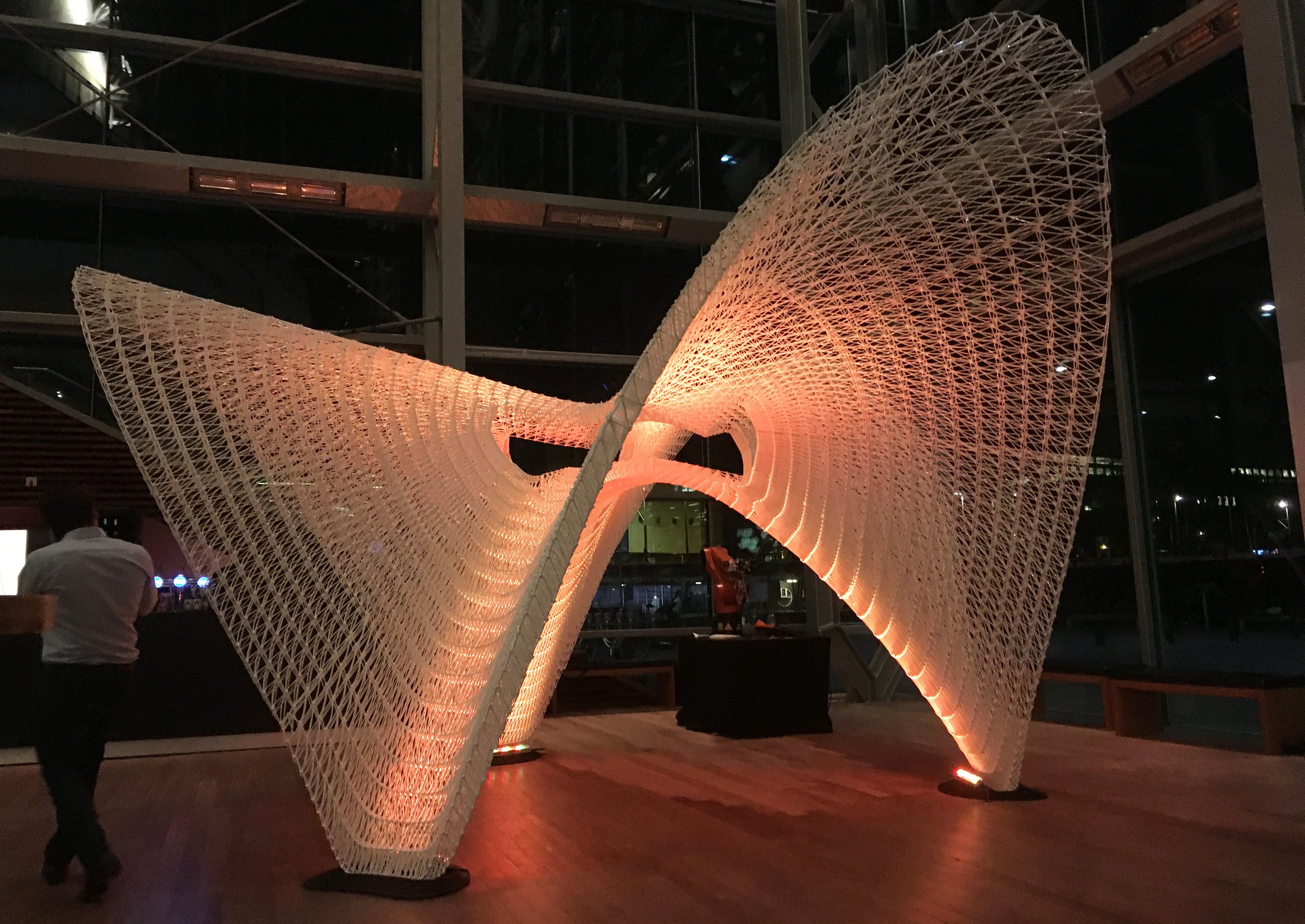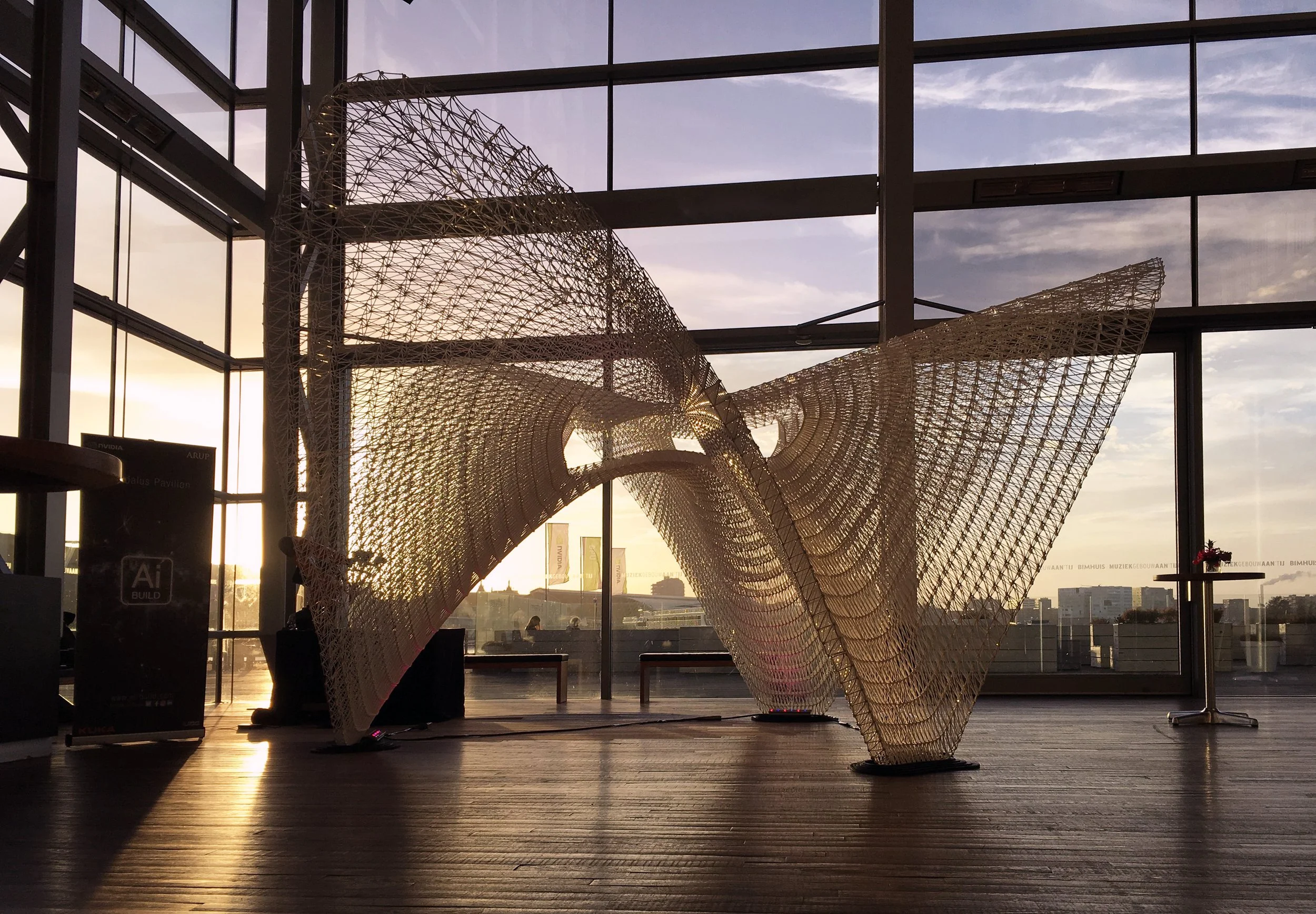Interview with Daghan cam (Ai build)
20 Jun 2025
On June 20, Echoes of Future Matter visited the Ai Build office in the heart of Silicon Valley to speak with Daghan Cam about the evolving dialogue between material, technology, and design. In this conversation, Daghan reflects on how plastics reshaped his view of form and sustainability, where human touch meets machine logic, how nature’s systems inspire computational design, and why embracing imperfection and time can lead to more poetic, future-oriented architecture.
Alexey: Can you share how a collaboration surprised or changed your path?
Daghan: When large-format 3D printing was still new, we were exploring applications. Then we were approached by Bottletop — they collect metal bottle tops and make luxury fashion items. We collaborated on an installation in their store. They used our complex lattice 3D printed structures with their handcrafted materials. The result was unexpected — merging manual craftsmanship with robotic precision. And a strong sustainability story too.
Alexey: How can computational methods be poetic?
Daghan: For me, the inspiration usually comes from nature. Not direct biomimicry — but abstracting behaviors into a design language. At macro and micro scales, nature has phenomena we can interpret — like how ants follow trails. If you apply that to pedestrians in a plaza, you can derive elegant, unseen solutions. These weren’t possible before, but digital fabrication enables them.
Alexey: What material, if any, has shaped the way you think about the form or space and why?
Daghan: Okay, I think... plastics — like plastics were seen as something bad before we entered 3D printing. There was a better reputation about other materials. But once we started working with plastics, we saw the potential of making them more sustainable. Some of the projects we worked on involved collecting ocean waste, like fishing nets, extruding them into filament, and creating a circular economy. There are interesting companies like Haddy going deep into sustainable plastics. That was something new for me. So mostly plastics… and metals as well.
Alexey: Where do you feel the line blurs between human touch and machine logic in your work?
Daghan: There are certain artifacts you get from machines making things — you wouldn’t necessarily design them, but they happen as artifacts of the process. Like when milling, you see vibration patterns. In 3D printing, materials behave in semi-predictable ways that you don’t design intentionally but learn to play with — gravity, physics, shrinkage, expansion. That’s the blurry line: what a human intends vs. what the fabrication process outputs. Some artists embrace these artifacts. It’s also about control — and letting go of it. Embracing error, mutation.
Alexey: Is there anything in the real world, a design or landscape, that resonates in your work?
Daghan: Everything that nature creates. If you look at Earth from above, rivers and networks emerge — complex but efficient, evolving through iteration. That’s the design language we studied, simulating physical phenomena to reach form. It’s different than manual modeling — you design the behavior of a system, and the system produces form. That’s what we practiced at the Bartlett and Architectural Association. You introduce a “predator,” you disturb the pattern — unpredictable artifacts emerge. It fits with digital fabrication.
Andrei: It’s a unique way of designing — not everyone works like this. It’s not about the final result, but the process. Nature is never perfect, but the system is.
Daghan: Exactly — it’s bottom-up.
Alexey: How do we preserve small-scale qualities in large-scale work?
Daghan: When you scale something, all effects scale — even defects. Mass production risks making design a commodity. Authenticity requires uniqueness. Additive manufacturing enables mass customization. So each object can be slightly different — more valuable. Personalization helps preserve nuance. People don’t want infinite flexibility though — they prefer a constrained but intentional design.
Andrei: That’s right. Constraints help make something meaningful.
Daghan: Yes, freedom alone isn’t enough — people need form and intention.
Alexey: Final question: what does “Echoes of Future Matter” mean to you?
Daghan: “Matter” is what makes up the universe. “Future matter” is what doesn’t exist yet — but will. New forms previously impossible. The “echoes” are how different people and perspectives experience that unfolding. There isn’t one future — there are many. The echoes are ideas clashing, colliding, and forming possible futures.
Alexey: That’s great.
Andrei: Perfect.












